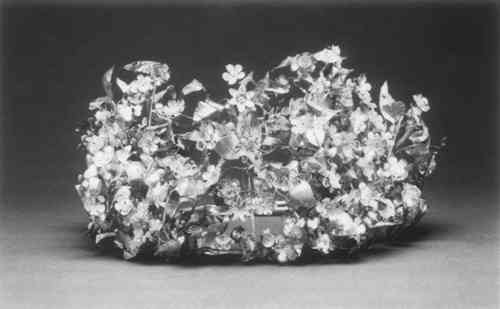INTERPRETATION OF ANCIENT ARTISTRY: CONSERVATION OF A GOLD WREATH FROM THE FOURTH CENTURY B.C.JEFFREY P. MAISH
1 INTRODUCTIONThe conservation of antiquities demands a balance between the aesthetic considerations salient to the treatment of an object of art and the need to preserve the evidence remaining from an ancient object. Such a balance was sought in the treatment of an intricate gold myrtle wreath (93.AM.30) in the J. Paul Getty Museum (fig. 1). The work on the wreath involved thorough documentation of condition and technology; treatment of contemporary damage, which entailed some reshaping; and evaluation and reattachment of dozens of loose pieces. Despite the chaotic state of the wreath,
The passage of time generally degrades an object's condition, depletes the quality of information related to it, and obscures the artist's intent. Conservators believe, however, that treatment is indeed possible and the decision-making process then may be subjected to a series of broad philosophical precepts (van de Wetering and van Wegen 1987) based on information derived not only from contact with an artist but also from historical, art historical, and archaeological information. Additional insights are offered by inspecting the object itself, of course. Intent can only be reconstructed by relying on: (1) the art historical and archaeological information that gives an external context for the object and (2) the information offered by the object itself that might be called its internal context. These kinds of information may be further defined as follows:
|
